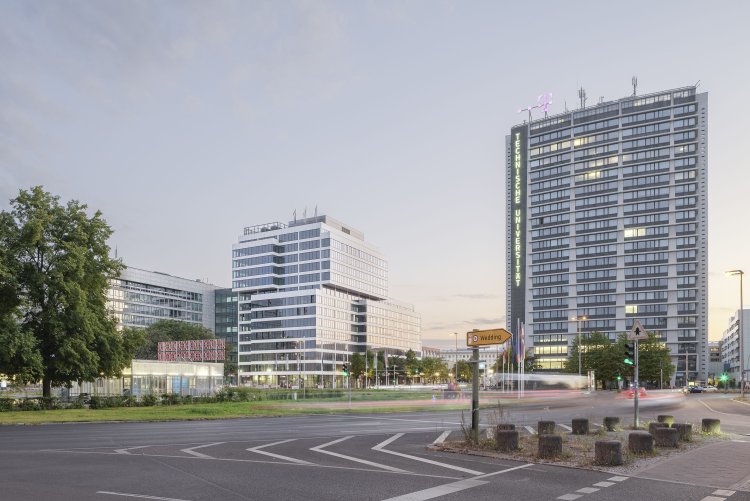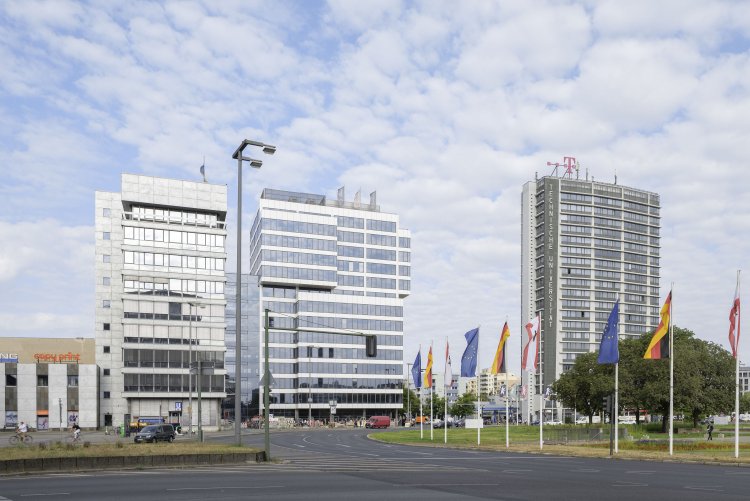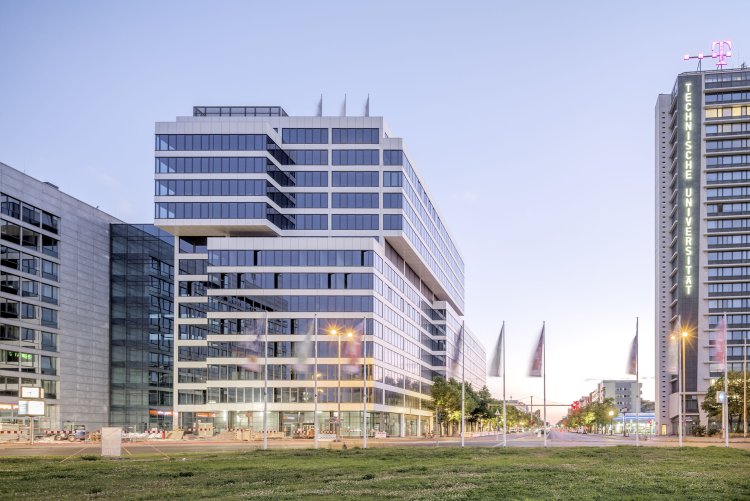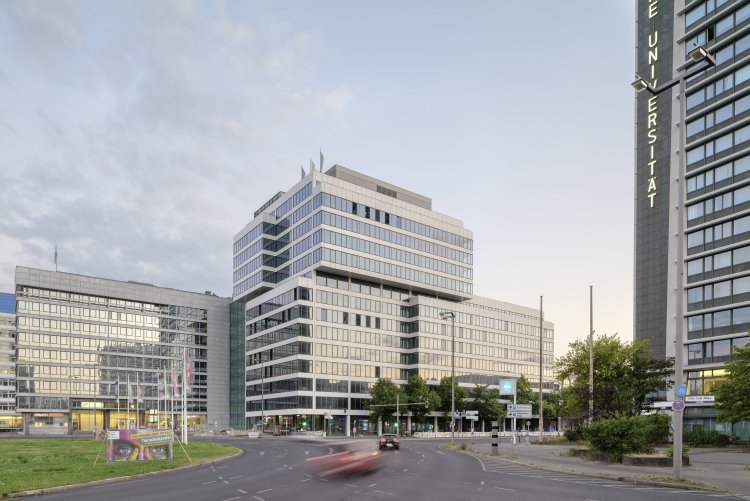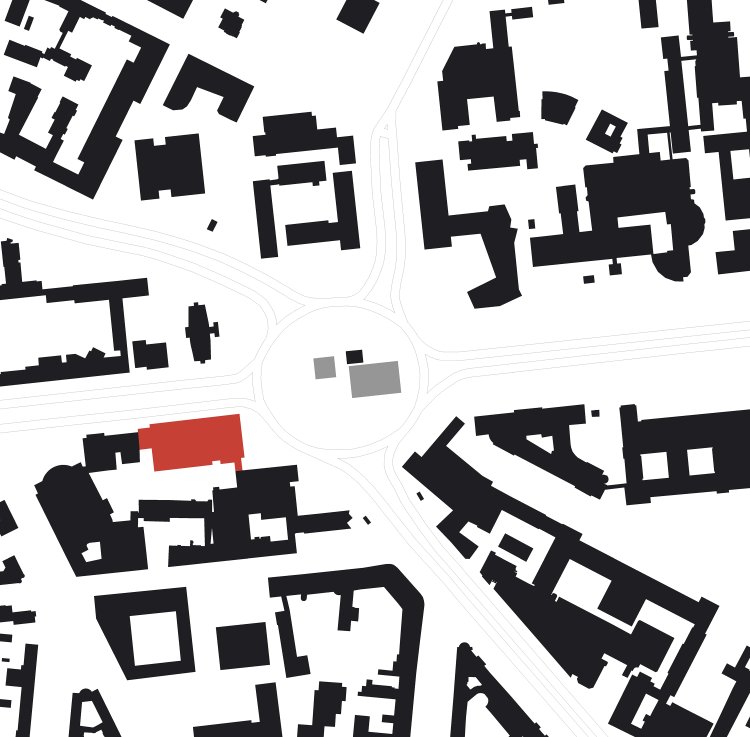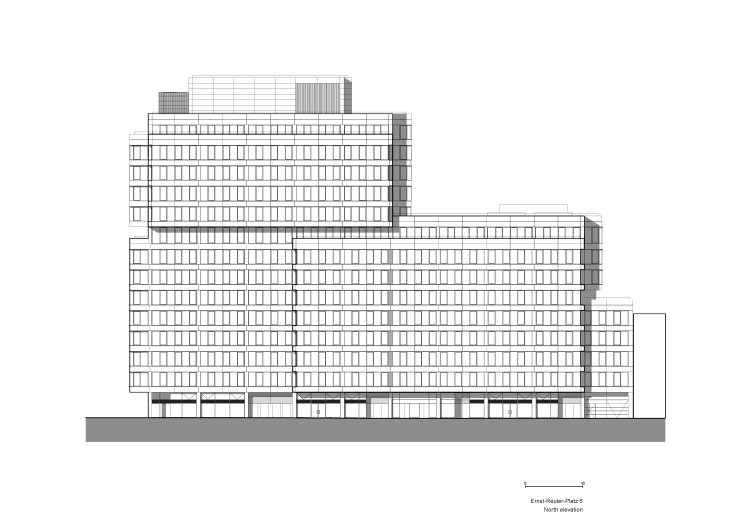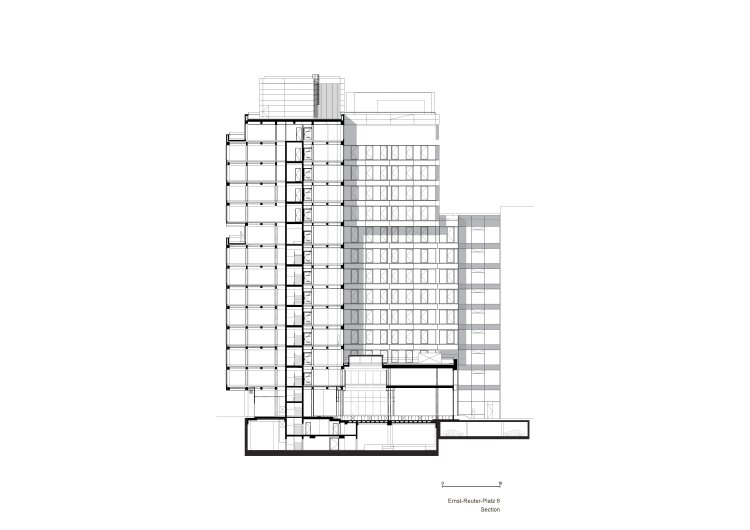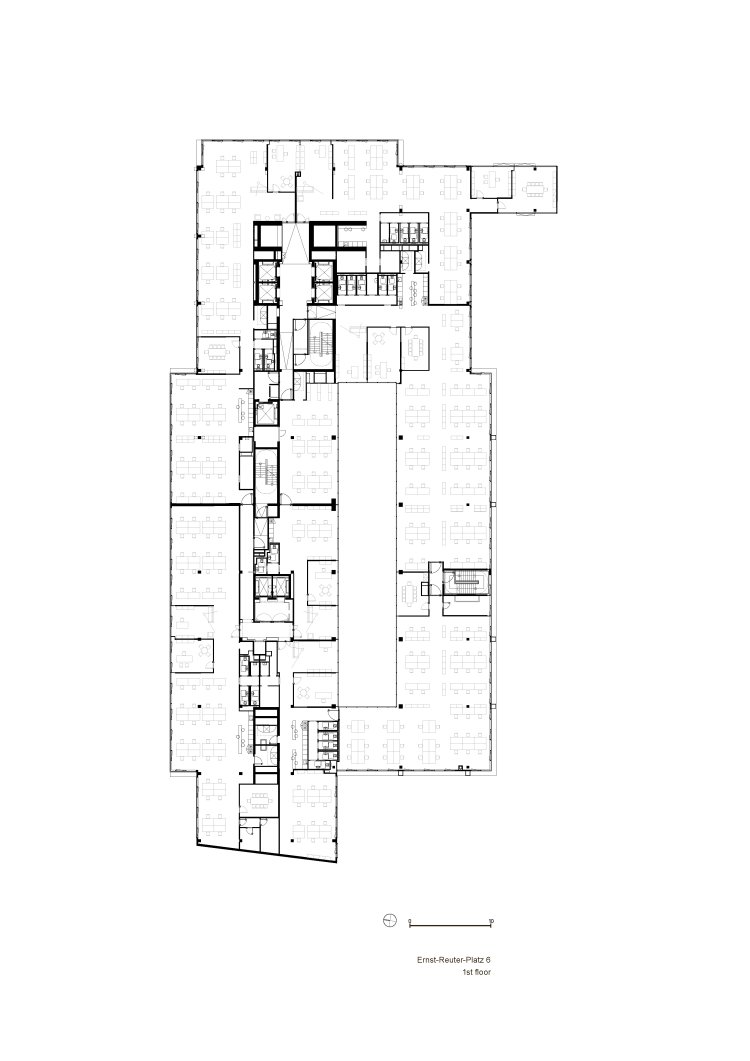Office building, Ernst-Reuter-Platz 6, Berlin / TCHOBAN VOSS Architekten
Revitalisation, addition of storeys, partial new construction
Architect: Sergei Tchoban
Project partner: Philipp Bauer
Project leader: Philipp Bauer, Kenan Ozan
Team: Kenan Ozan, Birgit Koeder, Katharina Stranz, Hanna Bulavana, Azzurra Pippia, Dorota Baraniecka, Valeria Kashirina, René Hoch
General planning: das projekt Generalplanung GmbH, Berlin
Project management: das projekt Projektmanagement, Consulting & Service GmbH, Berlin
General contractor: hagenauer GmbH, Immenstadt
Structural engineering: Weiske und Partner GmbH, Beratende Ingenieure VBI, Berlin
Building equipment: DELTA-i Ingenieurgesellschaft mbH, Berlin
Façade: Metallbau Windeck GmbH, Kloster Lehnin district Rietz
Fire protection: Krebs + Kiefer Ingenieure GmbH, Berlin
Elimination of pollutans: SVB Sachverstaendigenbuero DR. Sedat, Berlin; SSR Schadstoffsanierung Rostock GmbH, Berlin
Landscaping: Kretschmer Tauscher Landschaftsarchitekten Partnergesellschaft mbB, Berlin
Photographs: Klemens Renner, Lev Chestakov
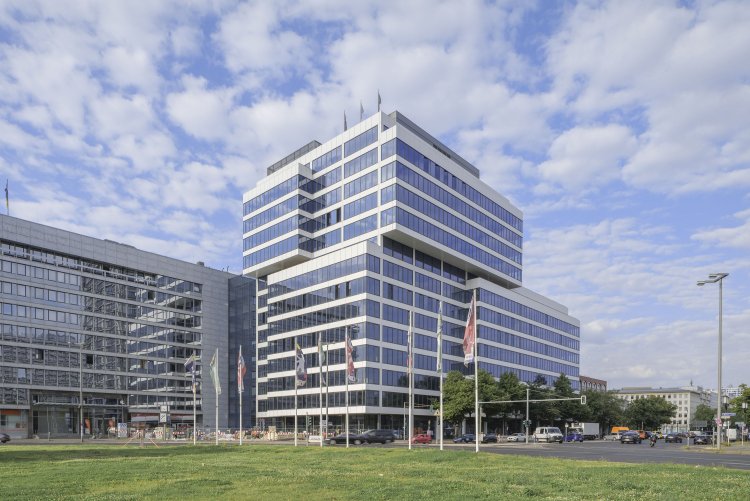
The high-rise office building at Ernst-Reuter-Platz 6 in Berlin-Charlottenburg was built between 1973 and 1974 to a design by the architect Bernhard Binder as a new steel skeleton building for the main post office. Together with the other buildings on Ernst-Reuter-Platz, which is a busy traffic junction, this sculptural, cubic building is part of a listed urban ensemble that is important for Berlin’s cityscape; it is not, however, itself classified as a listed building. This meant that it could theoretically have been entirely remodelled. The architects, however, made a conscious decision to preserve the architectural language of the 1970s which is so important for Berlin, especially at this location.
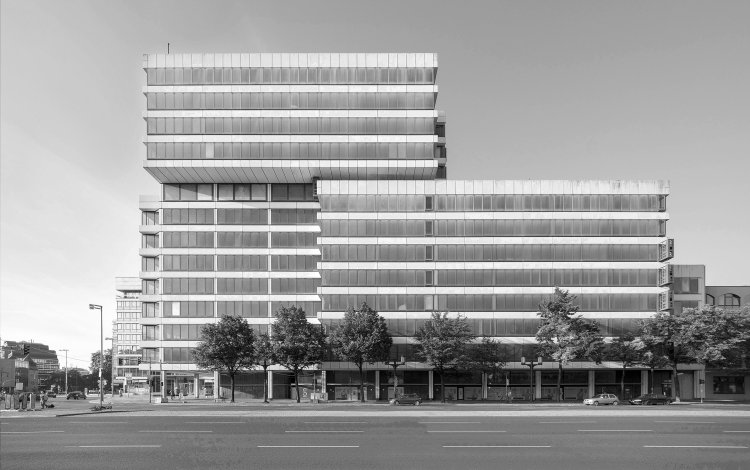
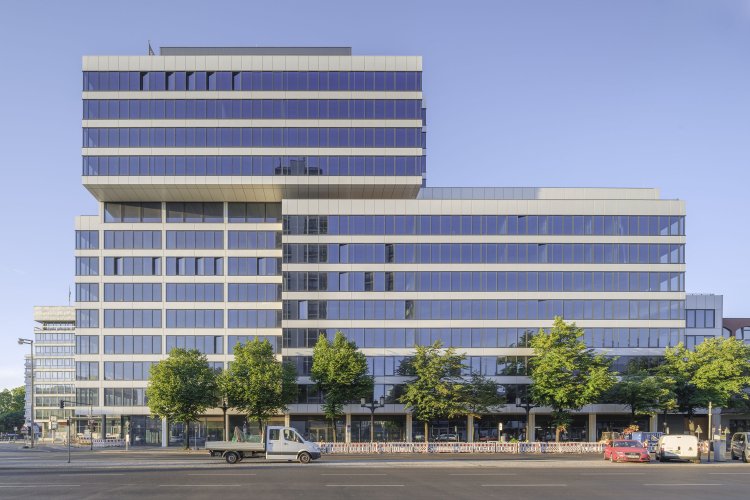
The reconstruction project involved complete structural and technical gutting of the existing building, as well as thorough remediation of the contaminated façade and the deconstruction of a two-storey extension in the courtyard. Advantage was taken of the planning law and structural possibilities so as to extend the building by one storey. The roof terraces resulting from the cubic staggering of the building structure will be used as outdoor space. Partly planted with dense vegetation, they will also contribute to rainwater retention.
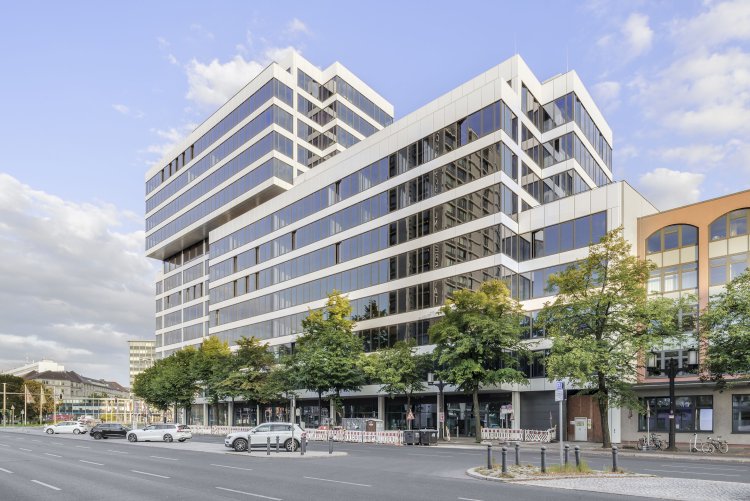
Due to contamination, the façade had to be completely replaced. The new design closely follows the design of the existing building. The building's structure continues to be characterised primarily by cubic, nested projections, and secondarily by minimally raised bands of windows in dark colours alternating with flat bands of wall.
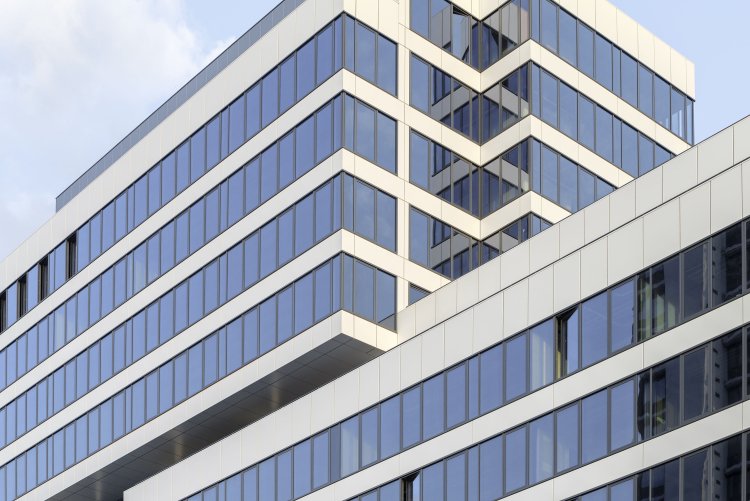
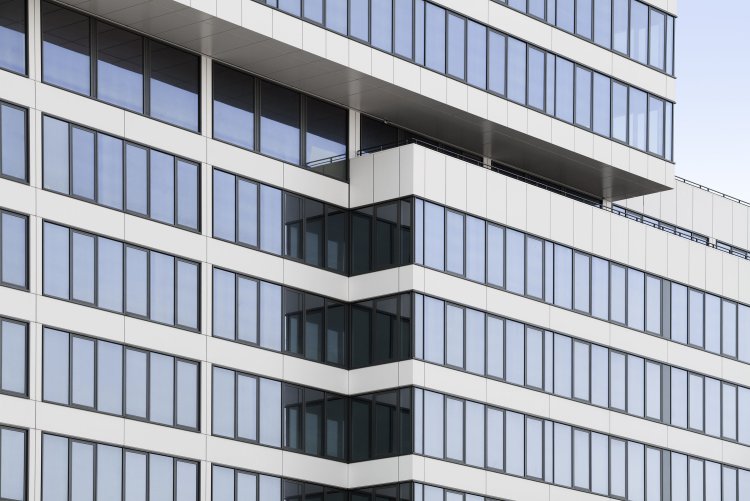
Following revitalisation, the building offers structurally and technically innovative rental spaces which will meet future users’ requirements, especially with respect to accessibility, building biology, and sound insulation.
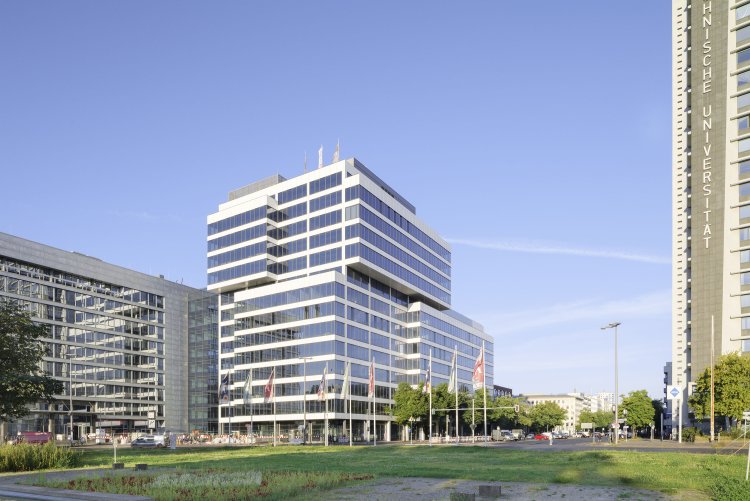
However, it was not just structural sustainability that was central for the architects; continuity of design was equally important. Of precise and clear design, the building can now once again take up its important urban role in the ensemble on Ernst-Reuter-Platz. Together with the former Telefunken high-rise opposite to the north, it forms the prelude to the westward thrust of Bismarckstrasse.
